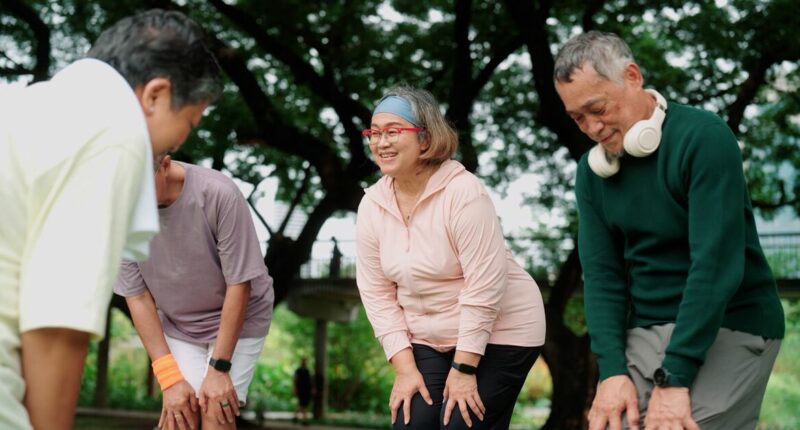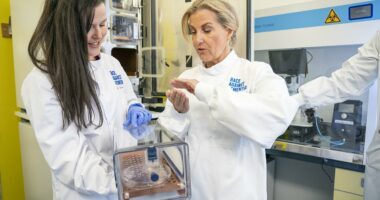Share this @internewscast.com
A survey by the ROS revealed that 69% of individuals with osteoporosis encounter difficulties in obtaining essential medications. Approximately 1.4 million women in England qualify for the new bone-building drug, romosozumab, but face access issues due to local restrictions.
Similar issues exist for denosumab injections, which help slow bone breakdown. A Department of Health and Social
Care spokesperson said: “We will roll out fracture liaison services across every part of the country by 2030, as set out in our
10 Year Health Plan.
People with osteoporosis stand to gain from the development of community health centers across the nation, which will deliver diagnostics, mental health care, rehabilitation, and nursing services to local neighborhoods. This initiative is part of a broader effort to improve the NHS, with progress already visible as waiting lists decrease and more patients receive timely treatment.
Investment is also being made into 13 advanced DEXA scanners, anticipated to conduct an additional 29,000 scans annually, ensuring earlier diagnosis for those with bone-related concerns.
A significant study has shown that over 2,000 individuals in England succumb each year due to frail bones, marking a 25% increase since 1990. Published recently in The Lancet, the study finds England’s mortality rate due to “low bone mineral density” stands at 3.8 per 100,000 people, which translates to about 2,150 deaths annually.
Importantly, this statistic is adjusted to negate the influence of England’s ageing population, indicating that the rise isn’t merely a consequence of increased lifespan. This trend contrasts with nations such as Ireland, Spain, and Japan, which have reported declining mortality rates stemming from brittle bones.
The findings, sourced from the Global Burden of Disease project that examines health risks globally, cover data spanning three decades from 1990 to 2020. As analyzed by the Royal Osteoporosis Society for the Sunday Express, the report also reveals that more than 220,000 years of quality life are lost annually in England due to fractures and disabilities caused by bone fragility. Meanwhile, several Western European countries, including France, Italy, and Portugal, have notably bettered their outcomes over the same timeframe.
Low bone mineral density refers to weaker bones that are more likely to break. It is not the same as osteoporosis, but everyone with osteoporosis also has LBMD.
Osteoporosis causes bones to weaken and break more easily, often from a fall from standing height, a sneeze, a cough or even
a hug. Hip fractures are particularly serious, often leading to loss of independence, long hospital stays and, in many cases, early death. Fragility fractures already place a huge burden on the health service.
Broken bones caused by osteoporosis cost the NHS, social care and the economy around £4.5billion a year, according to the ROS. Hip fractures alone account for £2billion of this total.
Across the UK, there are more than 500,000 fractures every year, many of which could be prevented with earlier diagnosis and
treatment. One of the main concerns is the “postcode lottery” for Fracture Liaison Services – specialist NHS bone clinics that identify patients after a first break, test for osteoporosis and potentially start treatment.
Only 51 per cent of NHS Trusts in England have an FLS. Wales has achieved universal FLS coverage. Coverage in Scotland and Northern Ireland remains patchy. ROS modelling shows that if FLS clinics were rolled out nationwide in England, they could prevent 74,000 fractures over five years, including 31,000 hip fractures, save the NHS £665million, and free up 750,000 hospital bed days.















